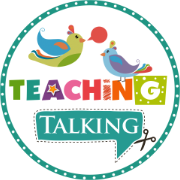
10 Tips for Holding Effective Speech Therapy Meetings
May 19, 2016 5 min read
Holding Effective Speech Therapy Meetings – What can I do?
We love doing therapy and evaluations, but the IEP and eligibility for speech therapy meetings? Not so much.
It’s even worse at the end of the school year when there’s a mad crush of IEP meetings that must be completed by the end of the school year. The stress of getting everything done, and keeping in mind the legal requirements of parental notification and meeting attendance, can be overwhelming. I’ve been there for sure!
To stop my sanity from slipping away, I’ve been using these strategies that help me stay focused, organized, and clear-headed:

Tip #1: Schedule the Entire School Year of Speech Therapy Meetings in August/September
Many schools have the special ed team take their entire lists or caseloads and put all of the students’ meetings into Google Calendar or Outlook Calendar for the entire school year. I know it sounds weird to put in May meetings when it’s a hot and sunny August day, but then it virtually assures your team of not overlooking a case.
Certainly move-in students and new students do come in and require IEP meetings, but if you can plan out a year of current students’ meetings, there will be no last minute surprises — or missing legal requirements of 10 day notification, etc. Believe me, it’s worth it.

Tip #2: Sit Down with the Secretary or Case Manager
Because I want to make sure that classroom teachers attend my speech therapy meetings, I need to make sure I sit down with the secretary or case manager (whoever is responsible for getting classroom coverage) and make sure that substitutes have been hired to cover the classrooms.
Legally I need to have a general education teacher present for my IEP meetings. I can always have a parent sign a meeting excusal form that says the parent is okay that the teacher or other team members were not able to attend the meeting, but it’s not best practice.
I want to hear from the teacher how my student is doing because there has to be an adverse educational affect to be eligible for speech therapy. I like to sit down with the secretary responsible for getting coverage about 1-2 weeks in advance to make sure that everything is set.
It does not have to be a big production — just a quick, “Hey, how’s it going? Do you think you’ll have coverage for Mrs. Jones next Thursday?” A check-in a week in advance prevents me from scrambling day of.
Tip #3: Teacher Input Form
Proving that adverse educational affect is vital to eligibility for school-based speech therapy so I need information from the teacher.
Some schools have comprehensive referral forms that I can use for an initial eligibility, but for an annual IEP meeting? I need updated academic information from the teacher. About two weeks before the meeting, I send the teacher an email.
I ask for information about:
- Reading
- Writing
- Math
- Functional performance (how the student navigates the school environment: following directions and the routine & organization).
Most of the time I need just a sentence or two in each area — and I stress that in my email, “I just need a couple sentences with data if you have it please.”
Teachers are busy and don’t want to sit around filling out another lengthy form. They often hear:

If I can get teachers to give me that information before the meeting, it helps me keep the speech therapy meeting flowing.
Tip #4: Send Home a Draft IEP
If you have demanding or concerned parents, it’s a really great idea to send home a draft IEP a week in advance of the speech therapy meeting.
I have done that with a mom that wasn’t upset about my services, but she was angry with the school and the classroom teacher for reasons unrelated.
I felt like that was a red flag for me to send home a draft IEP a week before the meeting so that she could go over it and share any changes she wanted made.
She came to the meeting with the draft copy marked up and we were able to go through it and make the changes. She felt comfortable and happy because there were no surprises during the speech therapy meeting. ❤️
It feels a little nerve-wracking to send home an IEP ahead of time, but that’s way less painful than getting into an argument during a face-to-face meeting.
Tip #5: Have an Agenda
Okay, it’s the day of the meeting. The parent and teacher are there and you are ready to start. Present everyone with an agenda. It feels a little stiff, but it keeps the meeting orderly — and everyone will know when it will be over, too! Many of my schools have a standard agenda that is laminated and handed to every team meeting. It helps you not forget things — like which forms to sign and when!
Tip #6: Let the Parents Talk
It sounds counter-productive when considering time constraints, but the parent needs to talk. Just like when you go to the doctor, you arrive with something on your mind or a question you have been waiting to ask. Parents arrive at IEP meetings feeling that way. That’s why there’s a part of the IEP right at the beginning for parents’ concerns. Take notes and make sure you address them during the rest of the meeting.

Tip #7: Don’t Forget the Strengths
Nothing is worse for parents than sitting through a speech therapy meeting hearing all the negative stuff without any positive input from the team.
I have some teachers that forget to discuss the great contributions the child makes in the classroom. So I’m always sure to jump in there and offer something up such as:
- “He enjoys being in the classroom.”
- “She follows the classroom routine like a champ.”
- “He is a great friend to his peers.”
Tip #8: Designate a Note Taker
I’m usually the one typing aka “the note taker” during the meeting. However when it is my turn, I like to make sure that someone else is taking notes as well. If the parents have concerns, I want to be sure I circle back to that topic and address it with a back up.

Tip #9: Print Everything Out in Advance in the Right Order
I print out the entire draft IEP in advance and I put it in the correct order required by my school district. Many pages will be updated and signed during the speech therapy meeting, but it’s nice to have the whole packet right there.
I can swap out the completed pages with the draft ones and reprint as needed, but the packet is already a framework for me to use to make sure everything is in order.
Tip #10: Grab the student’s file or folder
I like to share with parents things that we have done in speech, but sometimes it’s hard because many times we play games or use the iPad in ways that don’t offer “evidence of learning.”
I try to make sure to vary my sessions so that I have something to share with them from worksheets we did, data I collected, or projects we created. Parents love seeing their children’s work and progress!
BONUS TIP:
Make a copy of the paperwork for the parents and tell them thanks for coming and you are done!
The bottom line is that the best way to hold effective speech therapy meetings is to communicate early and often with all team members and stakeholders. Who better understands communication (YOU 😉!) That is the key, right?
Bio: Sarah Wu is a bilingual speech-language pathologist who lives in Chicago, Illinois. She can be found at speechisbeautiful.com.
Subscribe
Sign up to get the latest on sales, new releases and more …


